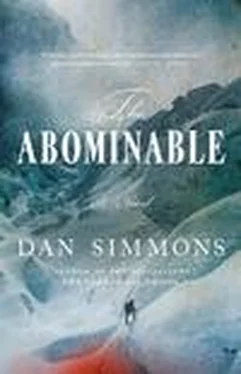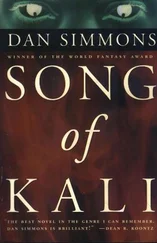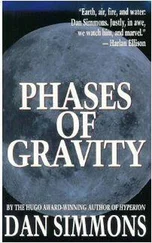According to my OSS link—who’d just finished a tour in London, Cuba, and the Bahamas, and who knew everyone involved in this elaborate operation (including, he said, the American writer Ernest Hemingway in Cuba, who, while playing spy himself, had stumbled upon some of the negotiations and was under close scrutiny by the FBI, OSS, and U.S. Naval Intelligence)—Hitler had been so panicked by this threat that he’d secretly dispatched his Deputy Führer and ultimate lackey, Rudolf Hess, to England on this secret and definitely one-way trip. Hitler’s offer, reported my OSS control officer, was simple: no publication of the photos (whatever they might contain), no invasion of England.
No one was sure exactly how Churchill’s acceptance of those terms was transmitted to Berlin—not through the Duke or Duchess of Windsor in the Bahamas this time, was all my friend and OSS boss knew—but transmitted it was. Late that summer, Unternehmen Seelöwe, Operation Sea Lion — with all of Hitler’s elaborate and fully ramped-up plans and logistics and new weapons for the invasion of England by sea and air—was canceled. The official explanation from His Majesty’s Government was that the Germans had backed down after Hermann Göring’s Luftwaffe had failed to crush the British air defenses, even though German air superiority over the Channel was very close to being established and destruction of RAF aerodromes was almost complete when Hitler gave the stand-down order. Thus the Battle of Britain in the air, and not the existence of seven incriminating photographs from 1921 along with seven negatives delivered from Austria by way of China, Tibet, and India, has always been given the credit for saving England from German invasion.
In the cave in the mountains of my little Greek island in 1943, I smiled and I wept a little and I lifted my cup of Basbayannis Plomari Ouzo—an anise-flavored drink that I usually despised—in honor of thirty brave Sherpas, a certain brave and very young Austrian Jew named Kurt Meyer, Lord Percival Bromley, Lady Katherine Christina Regina Bromley-Montfort, Dr. Sushant Rabindranath Pasang, Richard Davis Deacon, and Jean-Claude Clairoux, four of whom had been the best friends I had ever had or ever would have.
Epilogue
April 1992 Note to Dan Simmons: I’m still enough of a reader to know that an “epilogue,” especially one with the quaint “ue” at the end, went out of style in novels around the same time that spats went out of men’s sartorial style. But, still, I wanted to mention a few things that really weren’t part of my story from 1925, so I’ll use this clumsy “Epilogue” to share these short additions with you and trust you—should you ever read this far into my endless stack of notebooks—to exclude them if you ever share my story with anyone and find the epilogue cloying or irrelevant. Or both.
After my return to America in the autumn of 1925, it took me a few years before I even thought about resuming any real mountain climbing. When I did finally climb again, I tended to stick to the Colorado Rockies—there was a reclamation job there in the mountains west of Colorado Springs where I worked for two years—where the highest peaks are in the 14,000-foot range, and then in the Grand Tetons, which may be the most beautiful string of sharp peaks in America. I met Charlie and his wife there in Jackson Hole long before Jackson Hole became a destination for the rich and famous. All three of us shared a love of skiing.
When I did start climbing outside the States again in the late 1920s, it tended to be in the South American Andes. There were many peaks there that no one had even attempted yet. I would work my way to whichever country I wanted to climb in by serving as an able seaman on a freighter or on some rich man’s yacht, and that background helped me get the job I mentioned to you in person when you and I met—the job in the mid-1930s, when I spent my two years in Antarctica with Admiral Byrd.
But it was in 1929, roughly four years to the last days I’d spent on Mount Everest with my departed friends, when I received a postcard from Nepal.
First, I should mention that after 1928 it became increasingly difficult to get a permit to enter Tibet or make an attempt on Everest, and the first British expedition after Mallory and Irvine’s in 1924 was Hugh Ruttledge’s in 1933. They climbed high enough to find Sandy Irvine’s ice axe where I’d left it on a boulder before and below the First Step, but they hadn’t seen it as an arrow pointing downhill to Sandy Irvine’s body as I’d hoped they would. Or perhaps by then the long flow of loose rock where we had left Irvine’s corpse—frozen hands still folded together between his locked, frozen knees—had slid much further down, or even off, the mountain.
Anyway, the fourth British Everest expedition under Hugh Ruttledge’s leadership in 1933 didn’t reach even the altitude Teddy Norton had in 1924. Nor did Eric Shipton’s 1935 expedition, which followed Ruttledge’s route, although they did find and photograph more yeti tracks. Many of the same climbers, including Eric Shipton and Bill Tilman, returned to Everest again in ’36 and ’38, with the 1936 attempt being a simple “alpine style” attempt of the sort that the Deacon had planned for us in 1925, but Shipton and Tilman and their men were kept low by bad weather.
The Dalai Lama did not officially ban outsiders from Tibet until a horoscope he had cast in 1947 informed him that his country would be threatened by foreigners. He closed Tibet to all foreigners until 1950, turning it into the “Forbidden Kingdom” that Nepal had been for us in the 1920s, but this did not stop the Chinese from planning their aggressions: aggressions that would end up with five million murdered Tibetans and more than thirty thousand holy Buddhist shrines and monasteries—including our Rongbuk Monastery—deliberately destroyed by the Chinese, the Buddhist priests and nuns (or at least the ones who didn’t flee to India in time) hunted down like wild animals by the Chinese Army.
But at the same time that Tibet was shutting down to foreign climbers, Nepal was opening up.
It was in October 1929—the week after the stock market crashed—that I received my postcard from Nepal; the small card had the exotic, never seen by most Brits or Americans Nepalese stamps on it, but overlaid with both Indian and British stamps, since it had been forwarded to me by officials in New Delhi and by the Royal Geographical Society in London, and on the back was a brief handwritten message:
Jake—
Hope you are well. The farm here in the Khumbu Valley is quite productive and we’re both very happy. Little Charles and Ruth-Anne send you their love.
Your friends forever
There were no names under that closing. Farm in the Khumbu Valley? The only Westerner I’d ever known of who had succeeded in living and farming in Nepal was K. T. Owings, but he had barely noticed my existence during his visit to our Sikkim camp in 1925, and certainly wouldn’t have closed a greeting with “Your friends [plural] forever.”
Who else, then, but the Deacon and Reggie? If “little Charles and Ruth-Anne” were children born to my two friends since they’d disappeared on the mountain in late May of 1925, I could understand their naming the boy Charles; it had been the name of Reggie’s cousin, Percy’s older brother so terribly wounded in the Great War and the Deacon’s childhood friend—but Ruth-Anne? It took me some digging in old London records years later to find that Charles Davis Deacon had had a younger sister, Ruth-Anne, who had died a month after her birth in 1899.
So I choose to believe to this day that Reggie and the Deacon married—or at least stayed together—and elected to live separate from the world in Nepal through the rest of the 1920s, ’30s, and ’40s. But would the Deacon really have sat out the second war with Germany? Perhaps he felt he’d served enough.
Читать дальше












